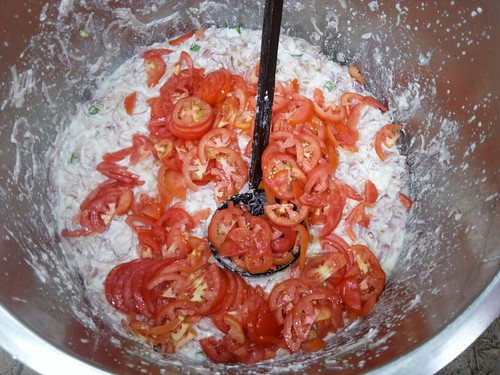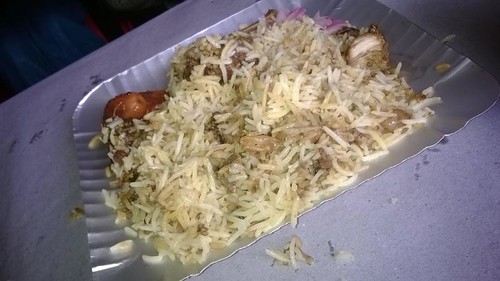Glossary C
Charlas also spelled Charllas or Saarlas refers to South Indian salad made from mixture of slices of fresh cucumber tomatoes, onions, chilies and curd. Some are also using Vinegar as dressing instead of curd.
Charlas is also known as Kuchember or Kachumber. (please see also article and photo of Kuchember)
Below are pictures of plain Charlas with just small slices of onions, tomatoes and cucumber and Charlas with curd which is often prepared as part of a meal for important occassions in Kerala, such as Wedding, first Communions and other important festivals.


Below is a set of meal served in a paper plate during a Wedding party in Allepey, Kerala, India with Biryani, Beef Masala and Charlas

Chäshörnli refer to irregularly formed Cheese dumplings served with fried onions.
Chäshörnliis one of the specilaties of the Canton Appenzeller of Switzerland which is most famous for their cheeses, especially the Appenzeller cheese.
